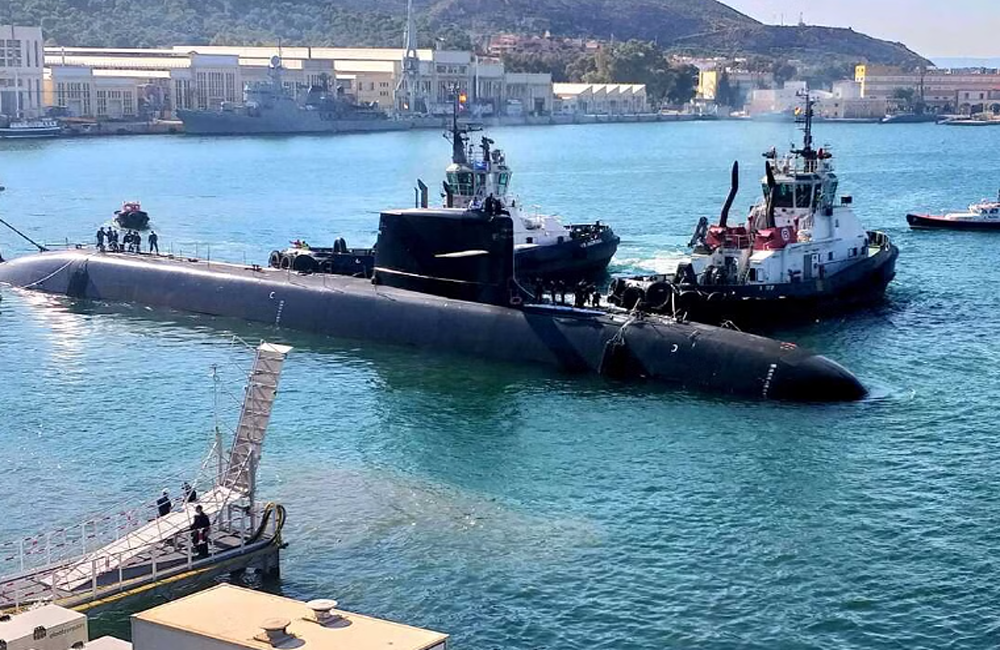Navantia of Spain and Larsen & Toubro of India inked a Teaming Agreement (TA) on Monday at the Spanish Embassy in New Delhi to submit a techno-commercial bid for the Indian Navy’s coveted P75 (India) submarine program.
The deal was signed in the presence of SN Subrahmanyan, L&T CEO and MD, and Augustin Alvarez Blanco, Naval Construction Vice President and Member of the Board- Navantia.
Larsen & Toubro and Navantia, Spain inked a teaming Agreement (TA) to submit a techno-commercial bid for the Indin Navy’s coveted P75 (India) submarine program. The agreement was signed in the presence of S N Subrahmanyam, L&T CEO &MD, Augustin Alvarez Blanco, Naval Construction Vice President and Member of the Board of Navantia. H.E. Mr José María Ridao Domínguez, Ambassador of Spain in India, and Captain (Navy) Fernando Alvarez, Spanish Defence Attaché, were also present, as were top officials from L&T Defence and Navantia. The ceremony was hosted at the Spanish Embassy in New Delhi.
The Indian bidder for Project 75 (I) is required to partner with a foreign collaborator (FC) and carry out the delivery program for six conventional submarines outfitted with Air-Independent Propulsion (AIP), while achieving the targeted Indigenous Content. The project is India’s largest defense acquisition project and is projected to cost over Euro 4.8 billion. A similar value 30-year lifecycle maintenance contract would then come after this. The ambitious Strategic Partnership (SP) model of acquisition employed by the Ministry of Defence’s P75(I) programme would be the first to be processed. This TA is the result of an MoU that L&T and Navantia signed for the programme on April 11, 2023 in Madrid.
In accordance with the contract, Navantia would design P75(I) submarines based on its S80 class of submarines, the first of which was launched in 2021 and is currently undergoing sea trials before being delivered to the Spanish Navy at the end of 2023. In addition to the S80 class, Navantia collaborated with the French DCNS (now Naval Group) on the design and construction of the Scorpéne class of submarines, which were sold to Chile and Malaysia. Additionally, Navantia assisted the Indian yard in building the Scorpene submarines (Kalvari class) in India.
An AIP system must be integrated according to the P75(I) programme. In addition to being the most advanced and effective AIP system in the world, Navantia’s cutting-edge 3rd Generation AIP solution is also the smallest, simplest to use, maintain, and environmentally friendly. It uses bioethanol, a readily available, low-cost hydrogen source that doesn’t require any specialised infrastructure, as its source of hydrogen. The AIP system operates more effectively thanks to the high hydrogen density of ethanol. Due to its liquid state, ethanol does not present the dangers that come with storing hydrogen. Additionally, the system can be refuelled anywhere in the world thanks to the widespread availability of ethanol. Additionally, L&T and Navantia are looking to collaborate on other military projects as well as on green energy ventures like offshore wind through Navantia Seanergies division.
S. N. Subrahmanyan, CEO & MD of L&T, spoke on the occasion and stated, “L&T is proud to collaborate with Navantia for this prestigious programme of strategic importance for the nation’s security. We have a competitive advantage in this programme and provide the Bio-Ethanol Stealth Technology (BEST) and environmentally friendly Green AIP solution thanks to Navantia’s illustrious 300-year history in naval construction and technical expertise. We pledge to offer the Indian Navy the most cutting-edge solution possible at a price they can afford.

















